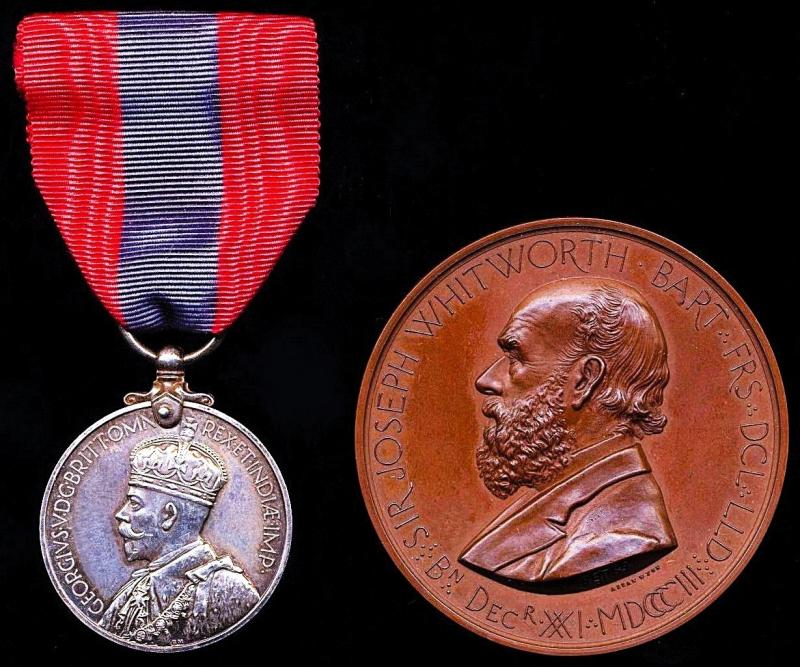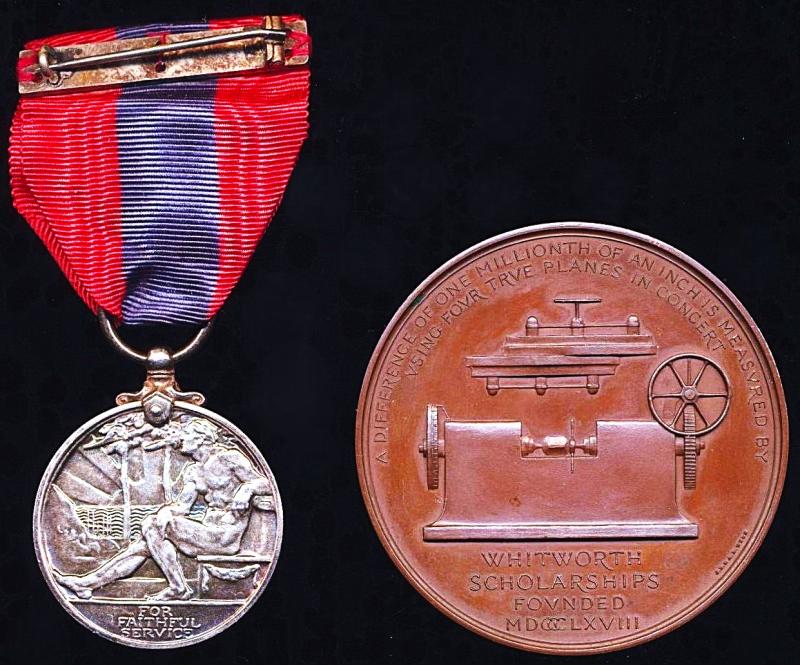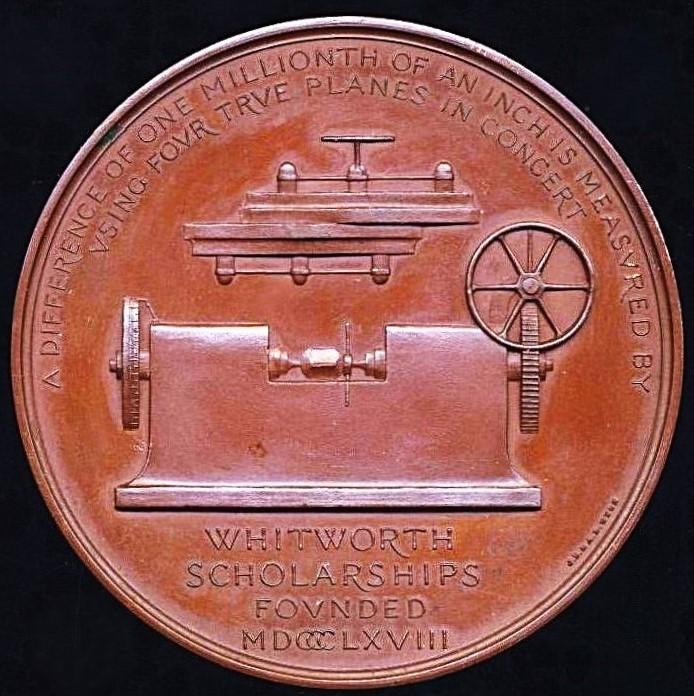A most interesting Royal Carriages / Royal Arsenal, long service and prize medal pair: Shop Manager, George William Hodges, Royal Carriage Department, Royal Arsenal, Woolwich
- Imperial Service Medal. GV 3rd Type 'Crowned Head' issue (George William Hodges)
- Sir John Whitworth Memorial Medal (G. W. Hodges. 1890.)
Medals Verification: Both medals verified as entitled, per below published sources:
- Imperial Service Medal: Award authorised on 13 March 1934, with details published in London Gazette issue of 27 March 1934
- Sir John Whitworth Memorial Medal: Recipient included in the 'Whitworth Register' published by the Whitworth Society (n/d)
In the London Gazette 'Home Civil Service' awards list, the recipient is shown as 'Shop Manager, George William Hodges, Royal Carriage Department, Royal Arsenal, Woolwich'
The Royal Carriage Department (R.C.D.): Was part of the Royal Ordnance Factory (R.O.F), Woolwich. It produced military gun carriages, limbers and gun mounting frames
History of the Royal Carriage Department: From 1682, the Old Carriage Yard in the “Warren” at Tower Place in Woolwich (i.e. the site which later developed into the Royal Arsenal) acted as a central gun carriages store. The surrounding buildings are thought likely to have housed carriage repair and “scrapping” workshops. In 1697, these facilities were replaced by a larger nearby complex of sheds and stores known as “New Carriage Yard”.
By the 1750s, the manufacture of gun carriages was also taking place on the site of the Royal Arsenal under the control of the Constructor of Carriages. This work took place around New Carriage Square which comprised a low quadrangle of storehouses. By c.1803, these activities were formalised as the Royal Carriage Department in recognition of the importance of effective carriage design and manufacture, alongside that of guns and ammunition. Operations at the re-organised R.C.D. were further improved around this period with the introduction of drive belt operated equipment which was powered off centralised stationary stream engines. The Royal Carriage Department was to become one of the Arsenal’s principal departments. Originally, it produced mainly wooden artillery carriages and limbers but as time went on, many carriage components, including the wheels, became replaced with steel. The department also produced the steel mountings for heavy naval and artillery guns.
In 1907, the Royal Gun Factories and Royal Carriage Department were merged to become the Royal Gun and Carriage Factories
The site of the R.O.F. was greatly expanded during the Great War and at its peak was 3.5 miles long, 1 mile wide (covering an area of 1,300 acres) and employed approximately 100,000 people. It was served by its own private railway system for both goods and staff movements around the sprawling complex. This comprised 147 miles of track making it the most complex and densest railway network in Britain. By the time of the Great War, the buildings that comprised the Royal Carriage Department were more scattered across the south-western part of the R.O.F.
The manufacture of gun carriages, gun frames and limbers continued at Woolwich after the Great War but on an increasingly scaled down level with steel now replacing wood as the principal material of construction for most field artillery pieces. The rate of decline of the R.C.D. was further increased given the British Government’s greater reliance on private industry for the manufacture of army ordnance.
George William Hodges, eldest son of George Hodges (Engine Driver & Fitter, a native of Plumstead, Surrey) & Elizabeth Hodges, was a native of Lambeth, Surrey, England, where he was born in 1869. In the 1891 National Census for England & Wales, George is recorded as a 'Fitter & Turner' living with his parents and siblings, at, 69 Jewson Road, Plumstead, Woolwich, London & Kent, England. By the time of the compilation of the National Census for England & Wales in 1911, George, described as Designer & Principal Foreman of Estimating etc Gun Mountings, at the Royal Carriage Department, Royal Arsenal, is recorded living with his wife Annie Marie Hodges (37) and daughter Marjory Muriel Hodges (4) at their residence located at, 59 Bostall Hill, Plumstead, Kent, S.E.
A most interesting recipient, who was employed in an important position at The Royal Carriage Department throughout the Great War and beyond
Condition: About EF
Code: 24778







